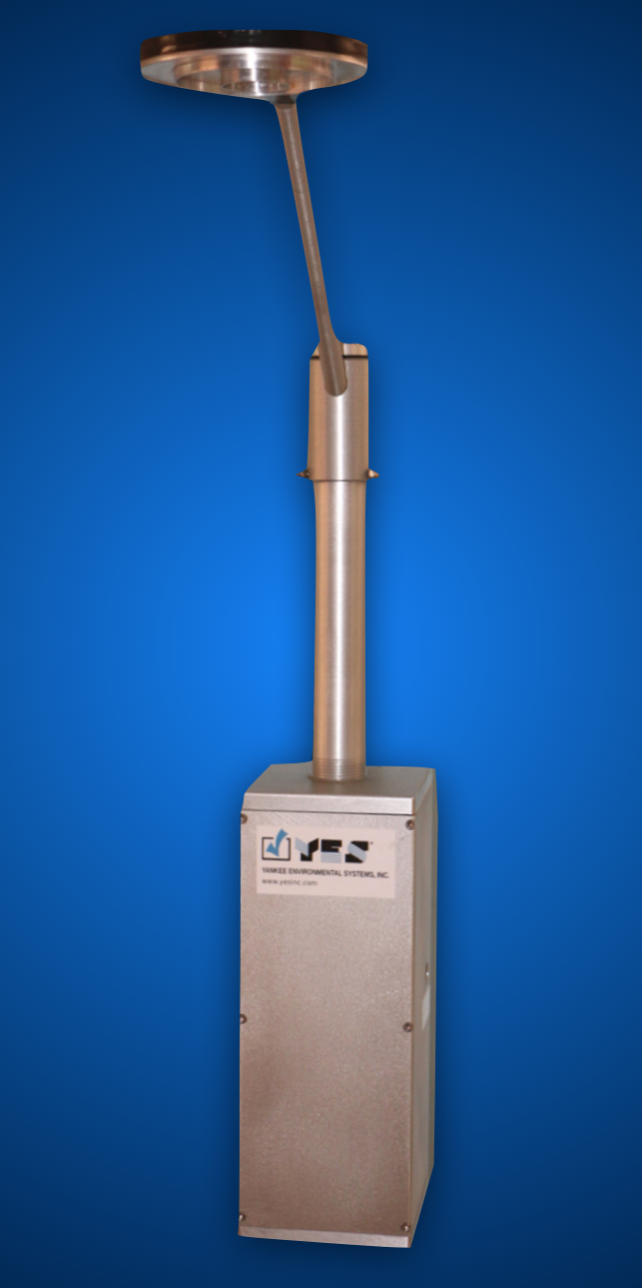TMS Total Meteorology Station
Description
The Model TMS provides real time snow and liquid precipitation rates at remote automated weather stations. It represents the first fundamental breakthrough in basic precipitation measurement in several decades, and is ideal for mission-critical meteorological and transportation applications. Unlike conventional weighing and tipping bucket precipitation gauges that have moving parts and require anti-freeze treatments, the TMS provides exceptional accuracy and reliability over the entire ± 50° C operating range.
About five inches in diameter, the sensor head consists of two isolated plates warmed by electrical heaters. During storms, it measures the rate of rain or snow by how much power is needed to evaporate precipitation on the upper plate and keep its surface temperature constant. The second plate, positioned directly under the evaporating plate and heated to the same temperature as the top, is used to factor out cooling from the wind.
Transportation agencies charged with public safety have traditionally relied on snow gauges with collection buckets that have open orifices. Windshields must be set up around these legacy gauges to increase collection efficiency, particularly of snow. These legacy gauges usually require troublesome anti-freeze additives with oil skim overlays. The action of wind coupled with snow sticking to the sides of open collection vessels tends to bias collection efficiency. Further, some legacy gauges require manual emptying during storm events.
With no moving parts, the all-electronic TMS sensor avoids problems associated with traditional volumetric or weighing rain gauges. It works equally well in snow and rain conditions. Liquid equivalent rates are calculated from real time measurements and output in real time.
Features
No moving parts maintenance-free design
Reliable solid-state technology
No wind shield or anti-freeze required
Microprocessor-managed "smart sensor" with RS-232 diagnostic output
Integrates with Vaisala’s WSDDM weather system.

TMS Total Meteorology Station
Statistically, precipitation rate can be highly variable in both time and space, and a single measurement only reflects a limited space-time domain. The measurement of liquid equivalent rate (LER) of precipitation, especially mixed/frozen precipitation, is fundamental to disciplines as diverse as transportation safety and global climate change research. The TMS has the unique ability to provide real time histograms of precipitation rate.
Applications
Reliable real time performance under any weather condition makes the TMS ideal for:
Professional grade meteorological stations
Roadway weather information systems
Calibration of other precipitation gauges
Weather and global climate change research
Benefits
The TMS can be placed in difficult-to-access areas and will provide accurate readings of snowfall rates precisely at locations where vehicles are most at risk of experiencing dangerous snow and ice build-up. Snow removal operators are then able to optimize coverage during storm periods. Increased efficiency during snow and ice removal operations improves public safety and saves money. Beyond de-icing applications, the precise knowledge of precipitation rates is fundamental to better understanding the Earth's climatic mechanisms.
Mechanical Interface: 72"H x 22"W
Mechanical Configuration
The aluminum weatherproof electronics enclosure and sensor head provide long life. Electrical and other components are designed to operate over a temperature span of ± 50° C. The sensing head is typically mounted at least two meters above the ground, mated to a customer-supplied flange, and the temperature sensor is aimed away from the equator to shade it from direct solar radiation.
Digital Output Data Format
The serial port output can be streamed or respond to a "T" string. It produces a record consisting of the measured precipitation rate in mm hr-1, power to the top and bottom plates in Watts, ambient temperature in ° C, calculated wind speed in ms-1, and system status, as well as a CRC check. The system outputs fixed length output records which can feed your data management system or optional WSDM software.
Internal CPU Operation
The TMS sensor is controlled by an embedded CPU that serves several functions:
At power up, the processor initiates heating to maintain an operating temperature of ≈ 90° C.
Once operating temperature is reached, power is adjusted to the top and bottom plates to maintain the plates at the temperature setpoint.
The serial port is monitored for commands; upon receipt of the query command, the CPU outputs a single data record. Streaming is also supported.
Continuous measurements of the plate power and ambient temperature are made by the ADC.
Differences between the two plates' power indicate incident precipitation, and the rate is calculated.
The CPU performs digital filtering of the data to minimize measurement noise.
Side view of TMS sensor.
Electrical Connections
Separate AC and communications conduit ports are located on the bottom of the electronics enclosure. Cabling between the sensing head and the enclosure is encased within the support arm. Inside the system electronics enclosure, a DB-9 female RS-232 connector provides digital interface (3 wire no handshaking), while a terminal strip provides AC input termination. Typically, two flexible conduits are used to connect power and serial data communications to a user-provided junction box.
Available Options
Dual version for detection of blowing snow
WSDDM Software
Dialup Telco Modem for POTS telephone lines
Ethernet 802.3 10/100BaseT for LAN
Real time data display software for MS-Windows.
Specifications
|
Size: |
72" H; 22"D; 8"W |
Materials: |
Aluminum |
|
Power on Delay: Running Average: |
5 minutes |
Electrical Connections: |
DB9-F RS-232, |
|
Power Required: |
110/220 Vac, 50/60Hz, 1Φ 600W max |
Environmental operating temperature range: |
±50° |
PRECIPITATION MEASUREMENT
|
Measurement range |
0-50 mm hr-1 |
|
Liquid Equivalent Rate accuracy |
± 0.5 mm hr-1 |
|
Slew rate |
1 minute Tc , ≈ 0.5 mm s-1 |
|
Repeatability |
± 0.25 mm hr-1 |
|
Hysteresis |
None |
|
Resolution |
0.1 mm hr-1 |
|
Digital output |
RS-232, 9600 baud 8-N-1, ASCII (14-bit 0.01mm/hr resolution) Separate pulse output simulates tipping bucket for interface to data loggers with counter inputs |
